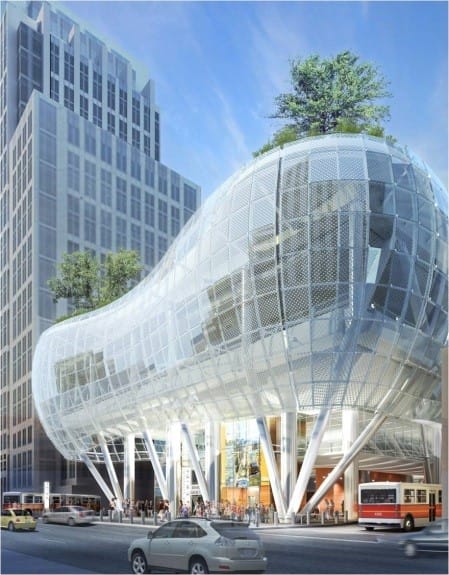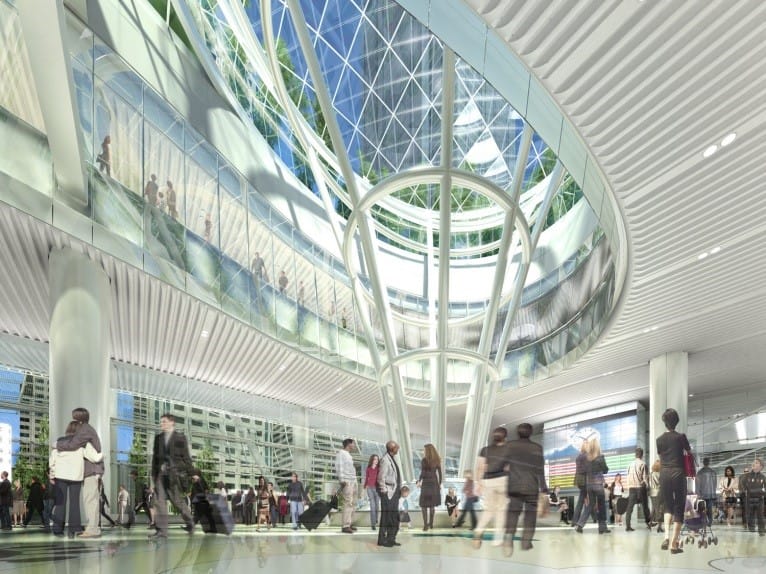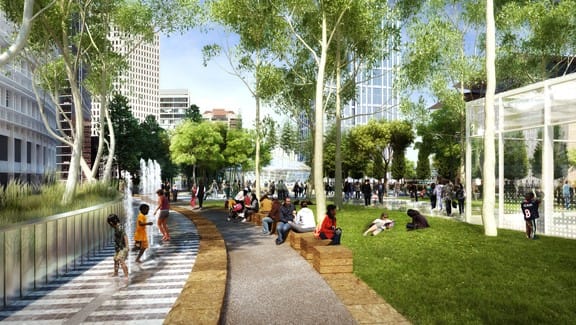NEW ELEVATED ROADWAY LEADING TO THE NEW TRANSBAY TERMINAL
SOME HAVE CALLED IT THE “GRAND CENTRAL STATION OF THE WEST”
The new Transbay Transit Center will replace the former Transbay Terminal in downtown San Francisco with a modern transit hub. Extending just south of Mission Street from Second to Beale Streets, the Transit Center will connect eight Bay Area counties and the State of California through 11 transportation systems: AC Transit, BART, Caltrain, Golden Gate Transit, Greyhound, Muni, SamTrans, WestCAT Lynx, Amtrak, Paratransit and California’s future High Speed Rail from San Francisco to Los Angeles/Anaheim.
Once completed the $2.3 billion transit center will includes up to 100,000 square feet of retail space and a rooftop park. At completion of the Program, the Transit Center will accommodate more than 100,000 passengers each weekday and up to 45 million people per year.
Connecting 8 Bay Area counties and the High Speed Rails system (when finished) which will be connecting San Francisco and Los Angles, a new elevated roadway was going to have to be built to handle the additional traffic coming to this facility. Shimmick Construction was awarded the contract to construct this elevated roadway into downtown San Francisco.
Because of tight quarters they were not able to use their typical method of lowering the forms, used to cast the concrete roadway. Having worked with C. H. Bull successfully on a number of jobs in the past Shimmick contacted our in house jack expert, Stan Sheppard, to help design a system to safely lower the steel and wooden structure used to cast the concrete roadway in place.
C. H. Bull Company designed and fabricated a system using two Enerpac 25 ton hydraulic jacks to lower the forms using high strength treaded rod. Small holes were cast into the roadway to allow the threaded rod to go from to the bridge deck to the steel I-beams holding the concrete forms.
Multiple jacking sets were connected together allowing the contractor to lower large sections of the forms at one time. The total distance the forms needed to be lowered varied from 20 feet to 30 feet. The sections were lowered in 14” increments controlled with a special manifold. All the forms were lowered safely and with minimal damage to the wooden forms.







